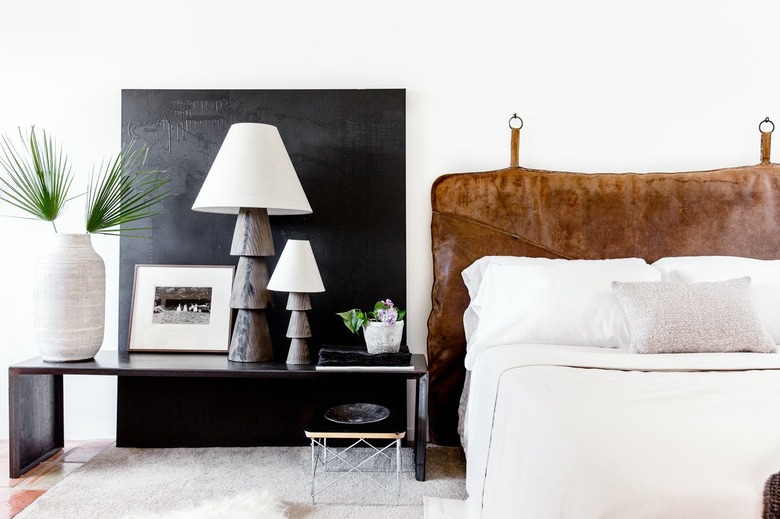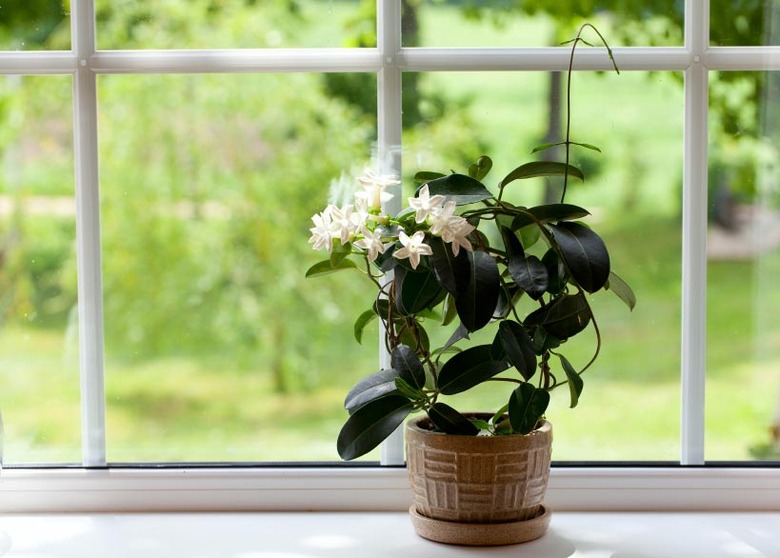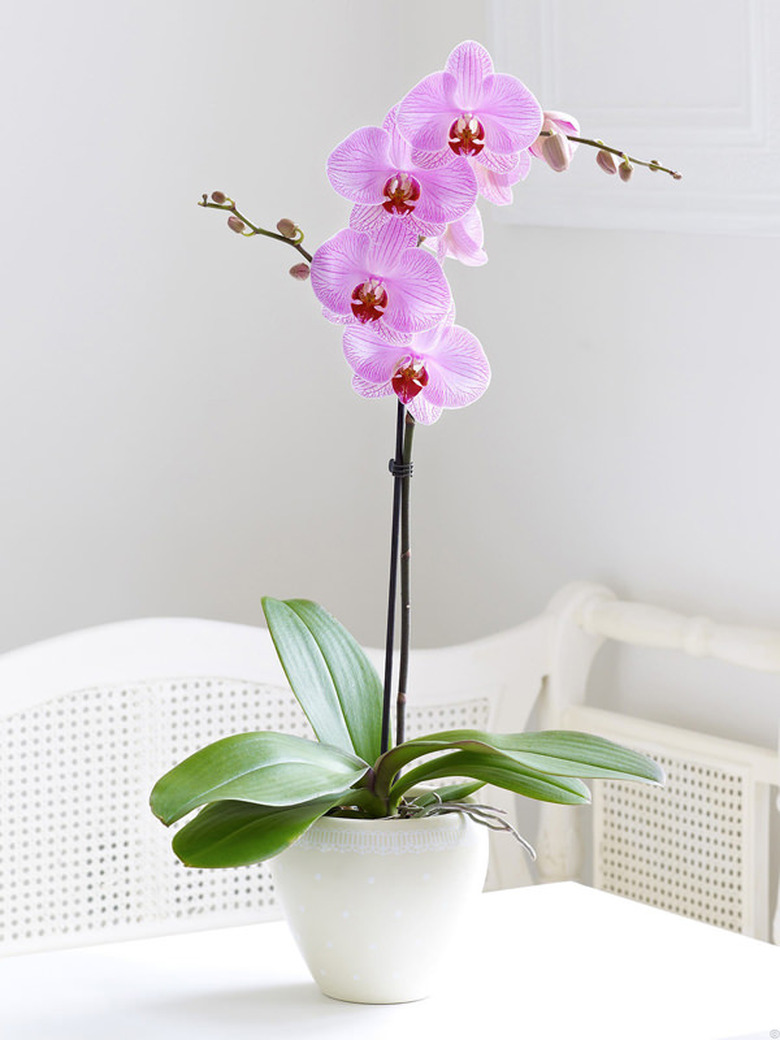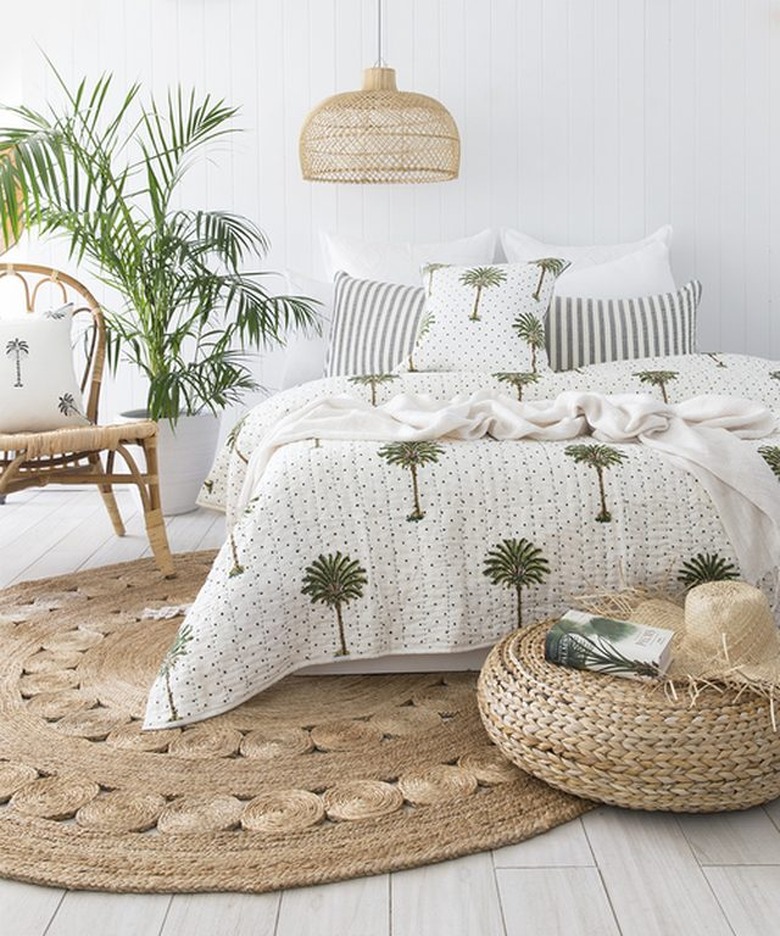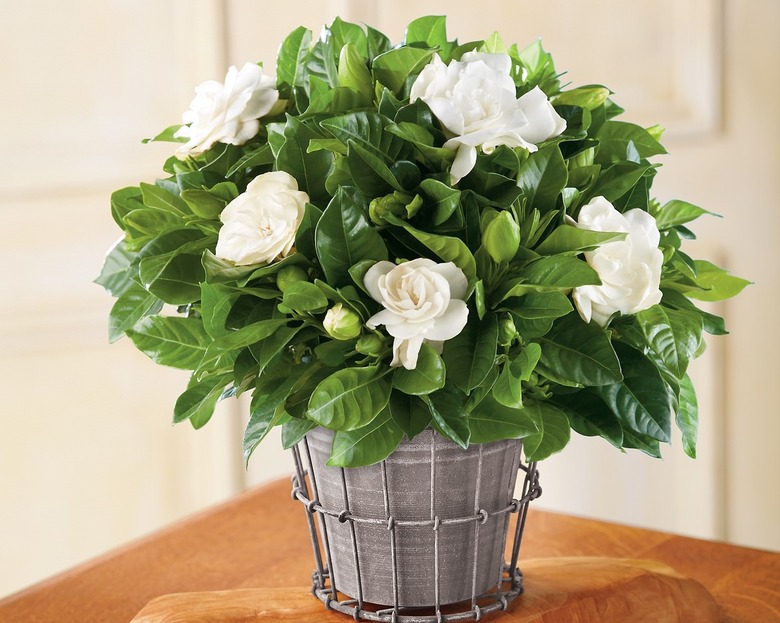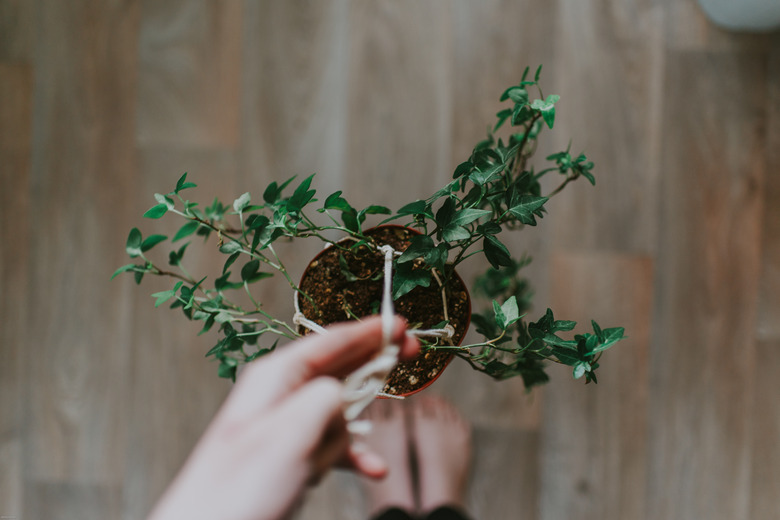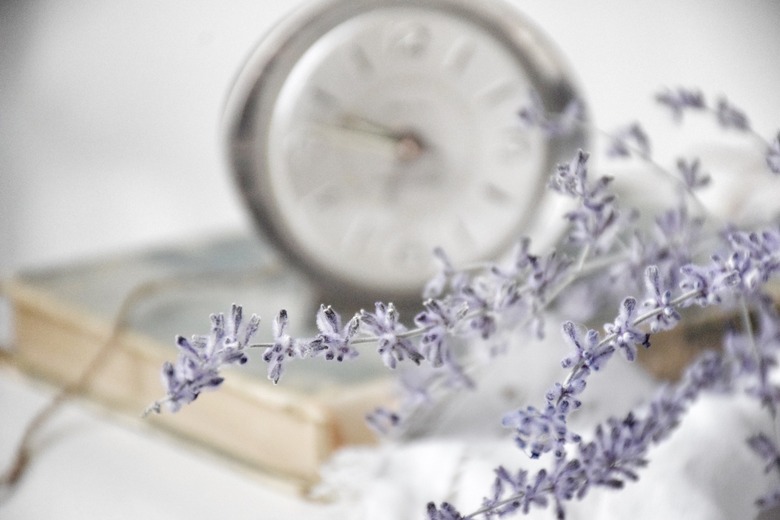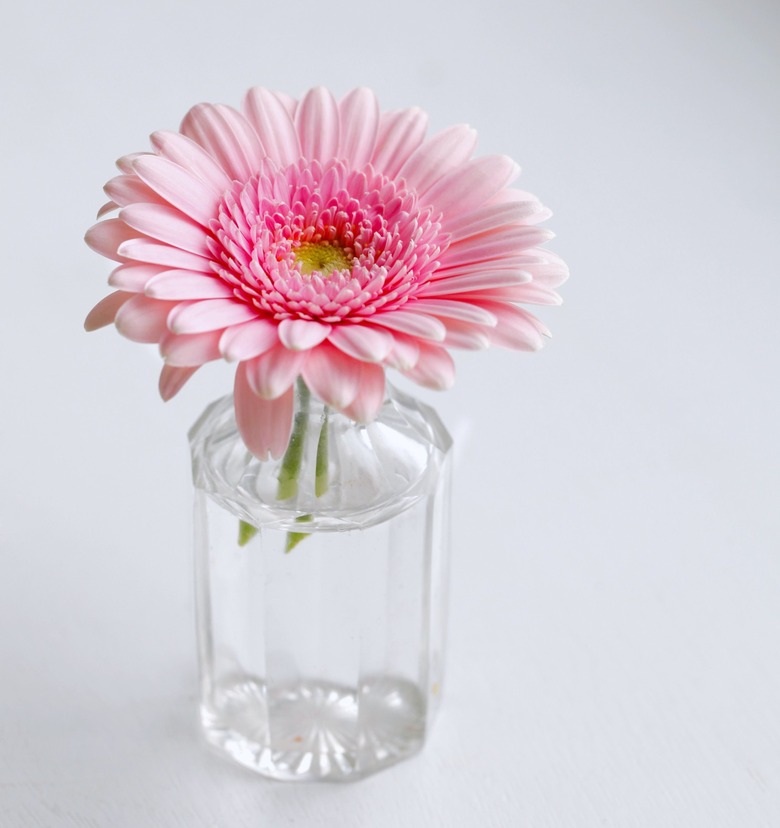7 Best Plants To Liven Up A Bedroom And Also Help You Sleep
We may receive a commission on purchases made from links.
There are many ways to make your bedroom a welcoming space, from adding ceiling fans, to finding the perfect lighting, to turning a humble dresser into a design-worthy piece. Yet we highly recommend that you consider adding plants to your place of slumber as well. While some plants thrive in the kitchen, or are meant to help you feel better, there are some plants that will specifically liven up your bedroom and help you sleep. Here are a few ideas, one for every day of the week.
1. Jasmine for deep sleep.
The starry flowers of jasmine are often showy outdoor plants, but you can easily bring them into the bedroom. Many types of jasmine grow happily indoors, but the most popular by far is star jasmine (Jasminum ployanthum). It's the floral version of Beethoven's "Ode to Joy," offering cascading, showy blossoms that fill the house with their heady, glorious fragrance. And they work so well for the bedroom since they are a natural sleeping aid. Yes, according to Wheeling Jesuit University, studies prove that the scents jasmine emits make for better sleep.
Care instructions: Jasmine can thrive indoors all year long if you give it the care it needs. Star jasmine, for example, requires bright light, so think a west- or south-facing window. Establish it in a pot filled with standard potting soil but add some extra sand for good drainage. Keep the soil moist with regular irrigation and don't forget a serious haircut in spring to keep this vine from taking over the entire bedroom.
2. Moth orchids for serenity.
Orchids (Phalaenopsis spp) have that elegant, exotic beauty that one associates with a lot of expensive care and exceptional gardening know-how. But the fact is, orchids thrive on neglect. Yes, they are epiphytes, "air plants" that do not get nutrition from soil, and that makes them easier, not harder, to care for. Moth orchids are among the easiest orchids to take care of, and perfect for your bedroom. The visuals are right: a blooming moth orchid, with its rounded petals, adds serenity to a space. You can find these plants with flowers in a variety of shades, from white to purple, and the bloom lasts weeks or even months. Best of all, these lovely plants are known to reduce xylene and toluene (toxic substances) in the air, helping you to relax and find peace of mind.
Care instructions: Taking care of moth orchids is truly easy, and you are much more likely to kill these plants by doing too much for them than too little. They require medium-low light exposure, so place in an east- or west-facing window and keep their medium moist. Medium-grain bark mix is great to grow them in, and water thoroughly but infrequently.
3. Areca palm for sweeter dreams.
If you are looking for a warm, tropical tone in the bedroom, you cannot do better than areca palm (Chrysalidocarpus lutescens). This palm hails from Madagascar and its airy, ribbon-like green leaves make a pleasing sight in a bright bedroom corner. Each little palm, growing from six to seven feet tall, looks like a small version of the big palms you see in Florida or Beverly Hills. And in the bedroom, their benefits do not end with aesthetics. Areca palm trees are absolutely tops in efficiently mopping up air pollutants. Not only do they clean the air, these plants also serve as natural air humidifiers. They can provide relief if you get colds or have sinus problems, since they release moisture into the bedroom air to help you fall into dreamland more quickly.
Care instructions: Areca Palm is one of the easiest palm trees to grow in a bedroom, as long as you have the space. These palms need bright, indirect light. If you offer them lots of it in a bedroom window or alcove, you'll see the leaves take on a sunny, yellow tone. But they can be happy with less as well. They also need well-draining soil and you'll need to water regularly during the growing season. Otherwise, let your palm's soil dry out completely between drinks.
4. Gardenia for relaxation (and yes, a little bit of romance).
No plant offers blossoms more seductive and sensual than gardenia (Gardenia jamsinoides), so it makes sense that it's a perfect fit in the bedroom. These plants offer smooth green leaves and glossy flowers in pale ivory. Once you have smelled their uniquely sweet fragrance, you can't help but fall in love with them. Gardenia plants come from Asia, Africa, and the Pacific Islands, and are a perfect addition to your boudoir.
Care instructions: Gardenias can grow from two to eight feet tall and are relatively compact. They need lots of light so place the potted plant in a bright bedroom window for best results. They flower best with cold nights and warm days, and for heaven's sake, don't let the soil dry out. Check it every other day to keep it evenly moist.
5. English ivy to breathe easier.
Now it may not be an association you relish, but your bedroom might be a hot-spot in the house for airborne molds. But never fear — just call in this super-plant to the rescue. English ivy (Hedra helix), the same plant you see climbing up your garden fences, can help clear the air in your bedroom. According to the American College of Allergy, Asthma & Immunology, English ivy strips out 78 percent of airborne mold in a room in just 12 hours. You may not want English ivy outside, given its aggressive spreading tendencies. But train those vines around a trellis or hoop or hanging basket in the bedroom and the plant will become a personal work of art.
Care instructions: English ivy is anything but picky. It thrives in bright light and low light, rich soil and poor. Water it well, it thrives. Forget about it for a week or two, it's still in the peak of health. If you like your ivy with a little cream color, try variegated cultivars like 'Gold Dust' or the dwarf 'Mini Adam.'
6. Lavender to calm your tensions.
How many plant species bloom in so striking a hue that they get a color named after them? Lavender (Lavendula spp.) is among the favored few and a perfect plant for the bedroom. This beloved flowering herb is famed for its sultry, royal purple blossoms, silver-green foliage, and its deliciously sweet fragrance. If a stressful day comes round, breathe in the fragrance of lavender blossoms. The anxiety disperses, your pounding heart slows to a serene pace, and you are nudged into the slow drift toward sleep. The plant's dramatic burst-of-color beauty, combined with its proven relaxant and sleep-inducing qualities make it a top choice for your bedroom window.
Care instructions: Inside or out, lavender is a low-maintenance plant. It attracts lots of attention but doesn't need much help to thrive. Native to the Old World, lavender requires only a sunny location, well-draining soil, and the occasional drink of water. In fact, they do best outdoors in dry conditions, so give them less water than you think they might need and everyone will be happy.
7. Gerber daisies for color and cheer.
When you read about plants that strip chemicals from the air, many are large shrubs with big green leaves, not bright little pops of colorful daisy-flowers. But if you can't trust NASA about such matters, who can you trust? And NASA rates the Gerber daisy (Gerbera hybrida) as one of the best plants around for removing the cancer-causing chemical benzene from the air and adding oxygen to improve your sleep. All these benefits come in a darling package, since each Gerber looks like a daisy splashed in a vivid shade, like flamingo pink, butter yellow, or ketchup red. Each sturdy stem grows from a circlet of large leaves and is topped by a large, happy daisy. So when you need to add joy and color to your bedroom, consider Gerber daisies.
Care instructions: You've probably seen Gerbers in cut-flower arrangements or in flower beds, but growing them in pots indoors is an equally appealing option. They require morning light (the sunnier the better) and afternoon shade, but if your bedroom offers this exposure, you are good to go. Use well-draining potting soil and plan to water twice a week. As the flowers die, clip them promptly and more will come to take their spots.
References
- Our House Plants: Glorious Jasmine
- Wheeling Jesuit Institute: WJU Professor and Students Find Jasmine Odor Leads to More Restful Sleep
- Amaheim Medical Center: Plants that Clean the Air
- The Sleep Judge: 23 Weird Plants For Your Bedroom That Will Help You Sleep Like A Baby
- David Wolfe: House Plants Improve Your Health
- Daily Mail: The Plants NASA Says You Need in the Bedroom
- Guide to Houseplants: Gardenia Care
- Sustainable Baby Steps: Types of Houseplants that Clean Indoor Air
- The Old Farmer'sAlmanac: Lavender
- Sunday Gardener: Growing Gerbera Daisies Indoors
- Birds and Blooms: Growing Gerbera Daisies
